Dementia is not synonymous with Alzheimer’s disease. Dementia is an umbrella term for a group of symptoms associated with cognitive decline. Alzheimer’s disease is one type of dementia. Today, physicians commonly recognize five major dementia types: Alzheimer’s disease, vascular dementia, Lewy body dementia (LBD), Parkinson’s disease dementia, and frontotemporal dementia.
Learning about these conditions can feel overwhelming, especially if someone you love has recently been diagnosed. Understanding what makes each form unique can help families find the right care and support.
What Are Lewy Bodies?
Lewy bodies are tiny, abnormal clumps of protein that build up inside nerve cells in the brain. These clumps are made mostly of a substance called alpha-synuclein, which is normally present in the brain and plays a role in how nerve cells communicate, though scientists still aren’t sure exactly what it does.
When these proteins don’t fold or clear away properly, they clump together. Over time, those clumps disrupt how brain cells work and eventually cause the cells to die. That’s what leads to the thinking, movement, and mood changes seen in Lewy body dementia.
You can think of Lewy bodies like “brain clutter.” Just as clutter can make it hard to move around your home or find what you need, these protein buildups make it harder for brain cells to send and receive messages.
Lewy bodies aren’t only found in Lewy body dementia. They’re also seen in Parkinson’s disease and Parkinson’s disease dementia, which is why these conditions share some overlapping symptoms. Some researchers even believe that Lewy body dementia and Parkinson’s dementia may be different forms of the same underlying disease process.
What are the symptoms of LBD?
People with Lewy body dementia often experience a mix of changes that affect how they think, move, and feel. These symptoms can come and go, and no two people experience them in exactly the same way. Some of the more common signs include:
-
Changes in thinking, judgment, and attention
-
Visual hallucinations (seeing things that aren’t there)
-
Fluctuations in alertness and awareness
-
Parkinsonism symptoms like a shuffling gait, stiffness, or slowness
-
Difficulties interpreting visual information
-
Memory decline (often less prominent early on than in Alzheimer’s)
-
Sleep disorders (especially REM sleep behavior disorder)
-
Mood disturbances such as depression, anxiety, or apathy
Because the symptoms can vary from day to day, it can be confusing for families trying to understand what’s happening. That’s one reason why Lewy body dementia is often underdiagnosed or mistaken for other conditions.
How Do Doctors Diagnose Lewy Body Dementia?
There isn’t a single test that can confirm Lewy body dementia. Doctors look at patterns of symptoms, how they progress, and rule out other possible causes before making what’s called a clinical diagnosis. In most cases, a diagnosis is described as “probable” or “possible” LBD, depending on how many characteristic features are present.
While a definitive diagnosis can only be made after death through an autopsy, advances in brain imaging and ongoing research are helping doctors identify and manage the disease more accurately during life.
One commonly used guideline is the “12-month rule”: if cognitive symptoms appear within 12 months of motor symptoms, that leans toward LBD; if cognitive decline appears more than a year after established Parkinson’s, the diagnosis may lean toward Parkinson’s disease dementia (PDD).
Possible Causes and Risk Factors
Scientists don’t yet know exactly what causes Lewy body dementia. We know that Lewy bodies play a central role, but we’re still learning what triggers them to form and spread through the brain. Most people diagnosed with LBD don’t have a family history, at least of LBD specifically, but some factors seem to increase risk, including older age, being male, or a general family history of dementia or Parkinson’s disease.
Because LBD shares some traits with Alzheimer’s and Parkinson’s disease, researchers are working to better understand how these conditions overlap and what they can teach us about prevention and treatment.
Because LBD overlaps with Alzheimer’s and Parkinson’s disease in its pathology and genetics, understanding these shared pathways is an active area of research.
How is LBD treated?
While there is no cure yet for Lewy body dementia, many treatments can help manage symptoms and improve comfort and quality of life.
- Medications such as cholinesterase inhibitors (like donepezil or rivastigmine) may help with thinking and memory.
- Antidepressants or other medicines can ease anxiety, depression, or sleep difficulties.
- It’s important to note that people with LBD are very sensitive to certain antipsychotic medications, so any treatment should always be guided by an experienced physician.
Non-medication approaches — such as maintaining structured daily routines, physical or occupational therapy, and supportive environments — often make the biggest difference in helping individuals live well day to day.
How can I reduce my risk of developing LBD?
While there’s no guaranteed way to prevent LBD, taking care of your brain health can make a significant difference. This advice, of course, generally applies to many conditions; living ‘healthily’ reduces risk pretty much across the board.
-
Eat a balanced diet full of whole foods and low in processed ingredients
-
Try to exercise regularly
-
Try to find ways to maintain social connections, and meet up face-to-face as much as you can
-
Prioritize good sleep and healthy sleep hygiene
-
Keep mentally stimulated through learning and hobbies. Lifelong learning is so important to keep those neurons firing
One interesting finding: some studies suggest caffeine intake may be associated with a lower risk of developing Lewy body dementia, although more work needs to be done on this topic.
One encouraging thing to remember about improving your health: even small, consistent lifestyle changes can have a lasting positive effect on overall well-being.
Caregiver Support at Bridges®
Living with LBD presents unique challenges for both individuals and families. At Bridges, we understand that caregiving for someone with LBD can be especially demanding as you manage hallucinations, motor issues, fluctuations, and mood shifts.
That’s why we offer educational workshops and monthly support groups for caregivers. Our goal is to equip you with practical strategies, emotional support, and resources so you can care for your loved one while preserving your own well-being.
Why Understanding LBD Matters
Because LBD often overlaps with Alzheimer’s and Parkinson’s disease in symptoms and pathology, recognizing its distinct features matters for care, treatment, and prognosis. Correct diagnosis allows clinicians to tailor therapies, anticipate complications, and support families with the right strategies.
At Bridges, our memory care communities are thoughtfully designed to support individuals living with Lewy body dementia (LBD) and all other forms of memory loss. Every element of our approach, from our purposefully designed environment to our specialized team training, works together to ensure that each resident experiences dignity, safety, and meaningful engagement every day.
Our team members receive extensive and ongoing dementia-specific education, giving them the tools to understand the unique needs of individuals with LBD. They are trained to recognize and respond to the behavioral and physical changes that accompany this form of dementia, using empathy, patience, and evidence-based techniques that promote calm and comfort.
At the heart of every Bridges® community is our engaging life enrichment programming, designed to meet residents where they are in their memory journey. Through art, music, sensory activities, and social connection, our programs encourage joy, purpose, and personal expression.
Contact us to learn more or to schedule a tour at your local community.

